The many lakes in Switzerland make it a great place for Stand Up Paddle (SUP). I first stood on a SUP board way back in the early 2000s when SUP was coming out as a new way of riding waves. Back then, I was of the attitude that SUP was a nice way to paddle into long mellow waves, but there was no real reason why anyone would want to try it on flat water.
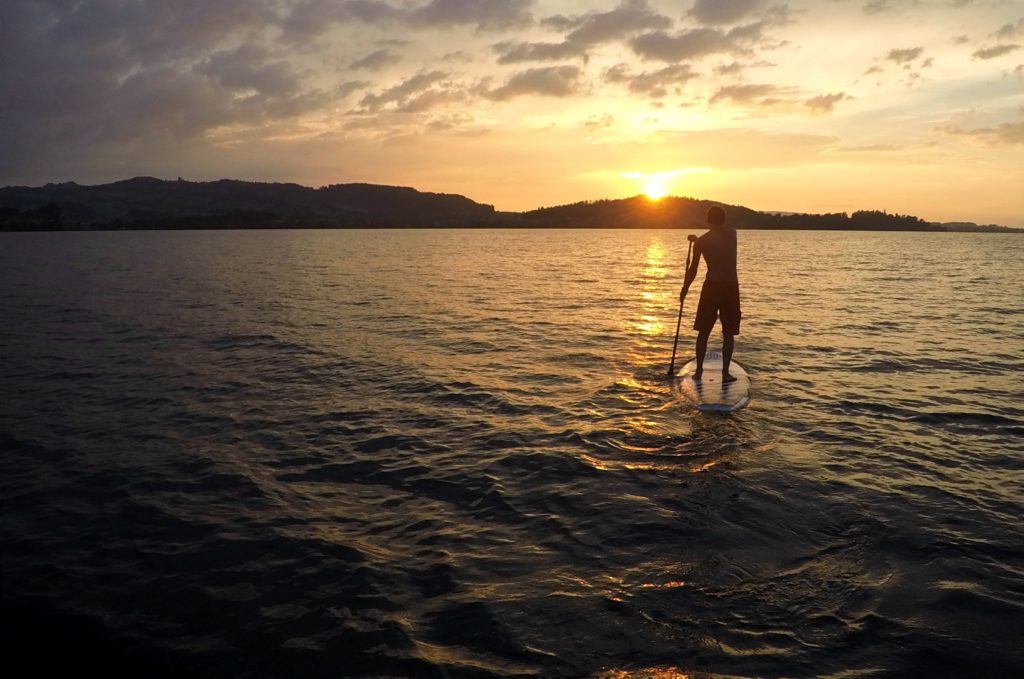
Fast forward 10 years and I found myself eating my own words. I was looking for a way to spend more time on the water when there wasn’t enough wind to windsurf and I discovered I quite enjoyed exploring Swiss Lakes on my SUP. Standing up gives you a better view (in my opinion) than sitting in a kayak, you recruit more muscles as you have to balance more when standing up (so getting a better workout) and the new breed of inflatable SUPs do not require a huge amount of space to store, are easy to transport and pump up within about 5 to 10 mins. Over the last few years, I’ve been SUPing more and more and enjoying it on flat water way more than I could ever have predicted way back when I first tried it all those years ago.
Regulations
There are some key regulations regarding Stand Up Paddle in Switzerland. Most lakes allow SUP boards, but before heading out on the water make sure you first cover all bases concerning any legal or safety issues you might need to take into consideration.
- Do not SUP in buoyed off swimming areas. The area inside the yellow buoys at swimming spots is only for swimming. No watersports equipment is allowed and in some places, there can be heavy fines for this.
- Do not SUP at the entrance to harbours, marinas or the landing areas for passenger ferries. As a SUP paddler, we are at the bottom of the heap in terms of water users in Switzerland. We need to avoid areas reserved for other water users and generally stay out of the way of others when on the water.
- If SUPing more than 300m from the shore you are required to have a buoyancy aid on your SUP board. This law has always been in place but has not been heavily enforced in past years. Rumour has it that it will be enforced more from 2020.
- If on the water with a SUP after sunset you are required to carry a white light which can be seen from all directions.
- You need to stay at least 25m away from lake shores which are covered in reeds.
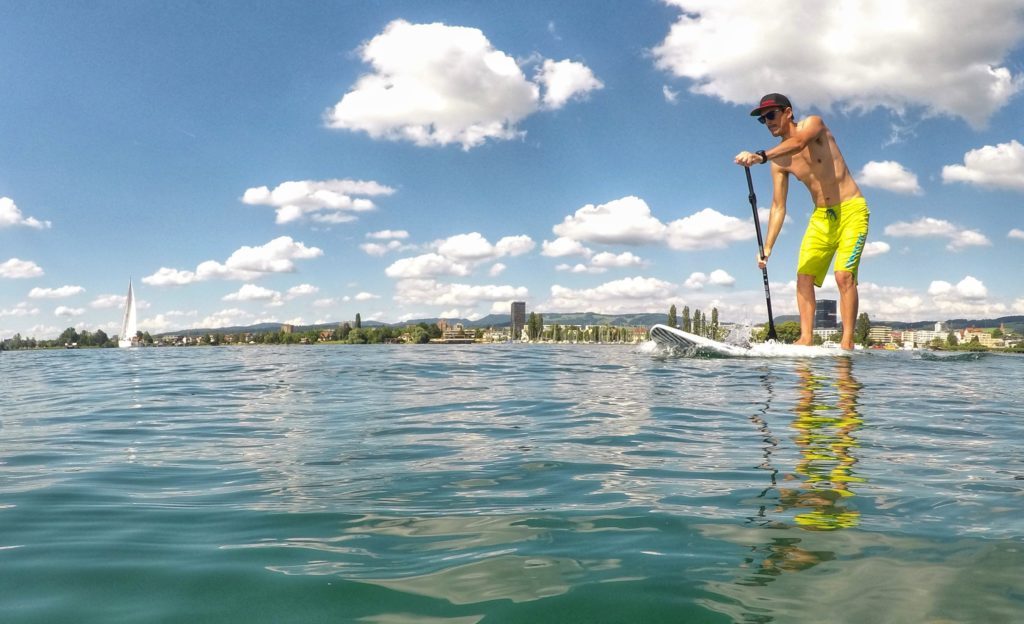
Safety
SUP is a sport which in general is very safe and has in my opinion only a small potential for injury, but following a few common-sense guidelines can make things safer for you.
- Always SUP with a leash. While a life jacket may be a legal requirement when more than 300m from shore, in my opinion, a leash brings much more safety. If you fall off your board it will be quite quickly carried away from you, which may lead to a long swim home. Having a leash keeps the board close to you and the board should always be your main form of buoyancy regardless of whether you are carrying a buoyancy aid or not.
- Wear appropriate clothing, if the water or air temperature requires it ensure that you wear a suitable wetsuit or drysuit (if paddling in winter)
- If you are learning or feeling unstable don’t stand up until you are in water deeper than waist-deep. In shallow water, the risk of injuring yourself when you fall is considerably higher than when the water is deeper.
- Practice getting back up on the board in about chest-deep water if possible before heading out onto the lake. Falling off and finding it difficult to get back on the board can be an exhausting and potentially dangerous situation.
- Avoid offshore winds – If the wind is blowing from the land out onto the lake it is likely to get stronger as you go further out on the lake. SUP boards do not paddle well into the wind and inflatable boards also do not paddle across the wind very well. You may quickly find that you end up getting further and further away from your starting point and waste a lot of energy trying to return.
- Keep an eye on the wind, if it starts to get too strong return to shore early.
- Do not let children SUP unsupervised.
- Ensure that inflatable boards have no leaks before going on the water.
- If paddling on rivers ensure that you have the correct type of leash.
If you have no previous watersports experience it may be worthwhile taking a lesson when starting Stand Up Paddling. Learning it correctly and being aware of what to look out for from a safety perspective can make the sport much more enjoyable in the long run.
Board Types
Inflatable
In general inflatable boards are a good option for Switzerland. Most people will struggle with storing and transporting hard boards and the advantage of being able to pack your board in a backpack and jump on a train with your board is definitely appealing. Inflatable boards do suffer slightly in performance compared to hard boards but for purely recreational purposes this is not a big issue.
In general the longer the board is the more efficiently it will paddle (but be less turny) and the wider a board is the more stable it will be. Most companies offer boards in the following size categories:
- 10’6″ – General all-round board, the most manoeuvrable but also the least efficient. Often in a lower construction category and price point which could lead to more flex in the board and less efficiency. These boards are usually about 32″ wide to ensure maximum stability.
- 11’6″ – A good touring board which usually comes with a bungee cord on the front to store a drybag etc. These boards are also usually about 32″ wide for maximum stability, but the extra foot (30cm) of length does add some paddling efficiency. These boards often come in double or single layer. The double-layer boards are generally more efficient to paddle, but a little bit heavier.
- 12’6″ – Often described as “Race” boards (true race boards are hard shell and about 14′ long). These boards may come in widths between 28″ and 32″ with the narrower ones being considerably more unstable. These boards are more efficient to paddle, but it is probably best to try and get a double-layered one if paddling efficiency is a prerequisite for you.
For general use, the 11’6″ boards offer a good balance in stability and efficiency for most people.
Hard Boards
In general hard boards are more efficient to paddle than inflatables due to having a sharper water release at the back of the board. They can be broken down into racing and wave type boards.
Race boards tend to be about 14′ (4.2m) long, take up large amounts of space, are difficult to transport but are incredibly efficient to paddle. In general race boards are quite narrow with a rounded hull so despite their relatively high volume (flotation) they tend to be somewhat unstable when paddling.
Wave boards vary in size from about 7’10” (2.4m) to about 10′ (3m) in length and have a more rockered (banana shaped) profile, but are somewhat wider, but with less volume (floatation) than the race-style SUPs.
Both of these styles of SUP’s can be used on lakes, but beware the smaller wave SUPs will not float that well, be a little unsteady and less efficient on lakes as they are designed to be pushed forward by a wave. If you would like a hardboard I can recommend something between about 8’6″ and 10′ with more than 130 litres of volume if you want something that you can play with in waves, but also paddle on Swiss Lakes.
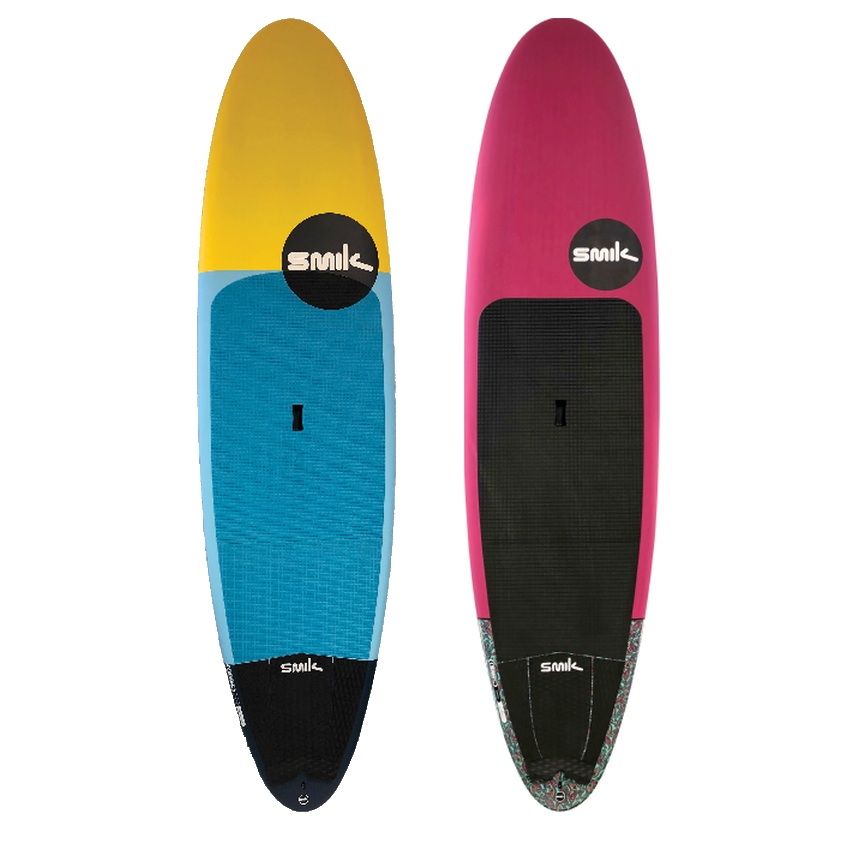
Summary
Stand Up Paddle is an amazing way to explore the lakes of Switzerland. The correct board for you will depend on a number of things from how much space you have to store the board, how you can transport the board to what it is that you would like to do with your SUP. Inflatables offer a large amount of versatility at a reasonable price whereas hard boards offer better performance (either for wave or distance paddling) but come with a higher price tag and are more difficult to store and transport.
From the spring of 2020 we will have a number of hard and soft SUPs from our partner brands to come and test (or rent)
Feel free to contact us if you would like any further information regarding Stand Up Paddle in Switzerland.
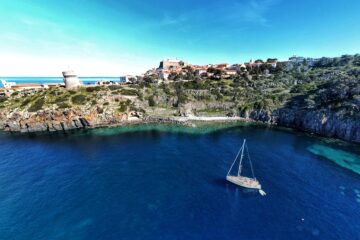
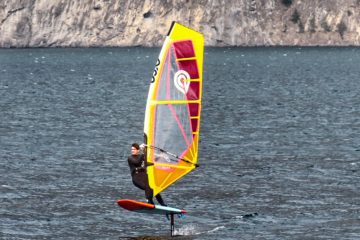
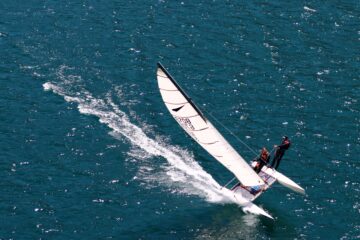
2 Comments
Marco · 31/05/2024 at 5:10 pm
Very very useful information thanks!
Do you have any idea if electric SUPs are allowed?
wannabewindsurfer · 03/06/2024 at 12:25 pm
I think they are so rare at the moment they probably don’t even know what they are. Worst case is they might try to take it under the motorboat laws which means the SUP would have to be registered, but I would be surprised that you would get a problem unlsess you are going at silly speeds amongst other water users.